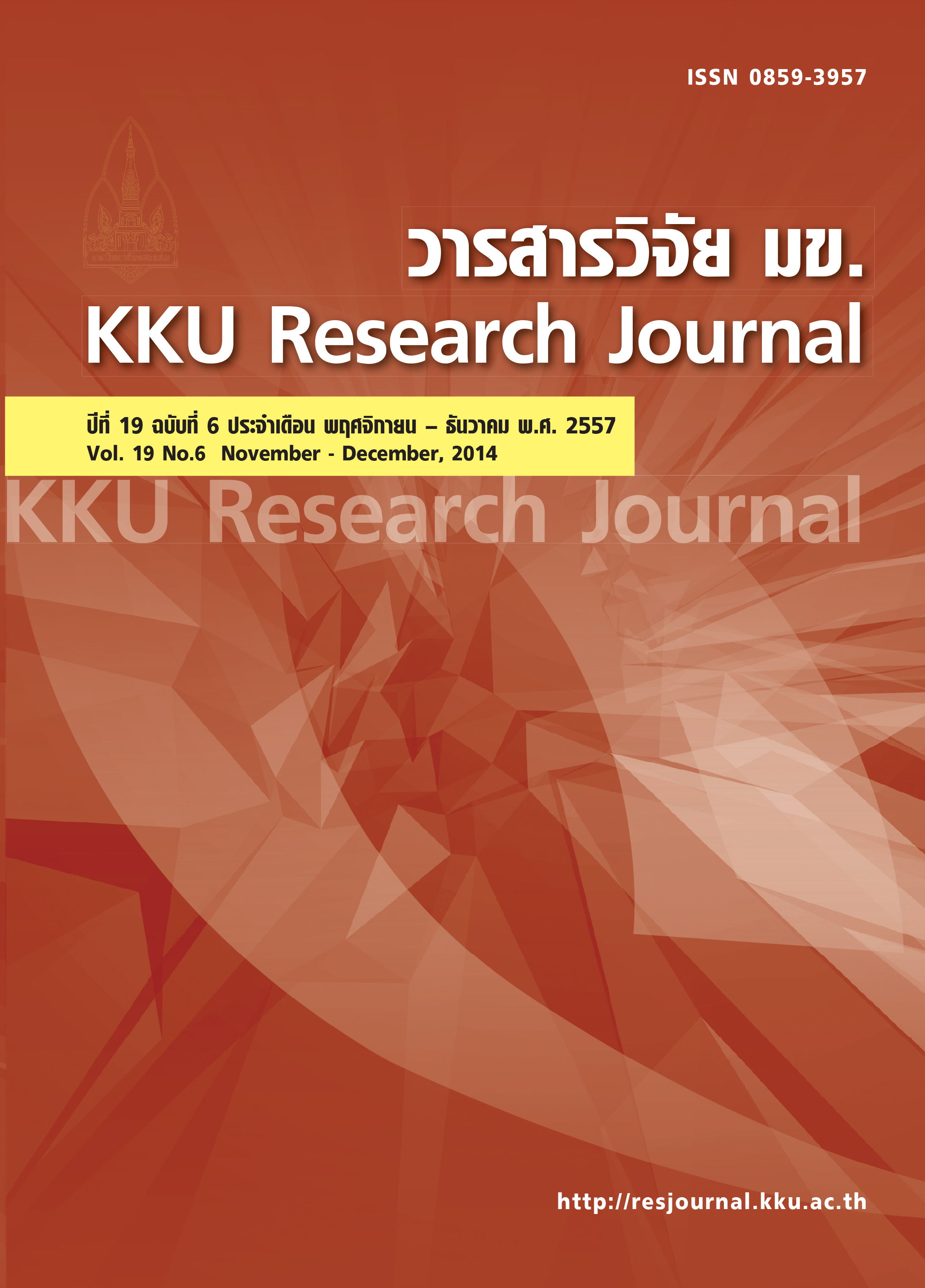Surface roughness prediction of SKD11 steel in CNC milling process using regression model
Main Article Content
Abstract
This research aims to study the factors affecting the surface roughness of SKD11 steel and apply the regression model for predicting the surface roughness in the precision milling process by CNC machining center machine. The factorial experiment designs were conducted on 3 factors with 2 replications. Three main factors in this study were the spindle speed, feed rate and depth of cut, whereas the response factor was the surface roughness. The experimental results indicated that the main factors affecting the surface roughness were the spindle speed and feed rate. The results also showed the two-way interaction effects between the depth of cut and spindle speed, and also between the spindle speed and feed rate. There was also the three-way interaction effect among spindle speed, feed rate and depth of cut. The regression model was developed and used to determine the minimum surface roughness with the spindle speed of 1646 revolution per minute, feed rate of 140 millimeter per minute and depth of cut of 0.50 millimeter.
Article Details
How to Cite
Chantasee, S., & Punsomsakul, S. (2017). Surface roughness prediction of SKD11 steel in CNC milling process using regression model. Asia-Pacific Journal of Science and Technology, 19(6), 843–859. retrieved from https://so01.tci-thaijo.org/index.php/APST/article/view/83067
Section
Research Articles


